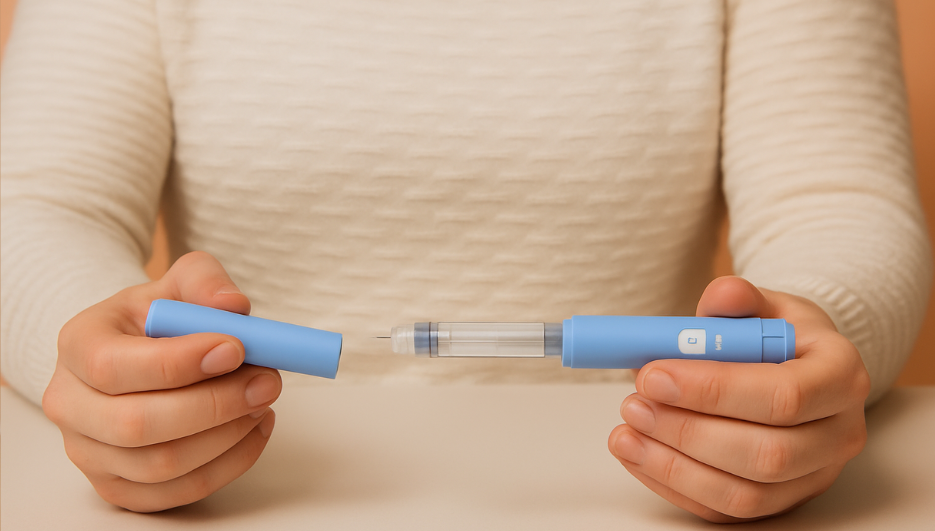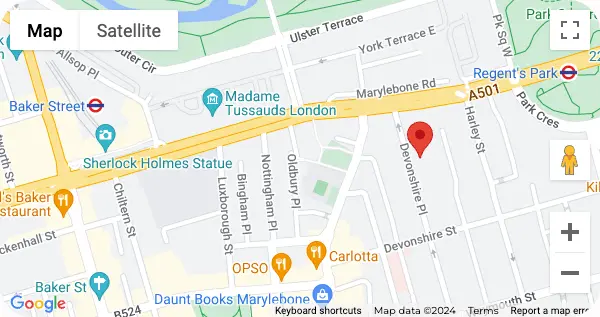Quick Facts:
- Initial dose: 0.25 mg per week
- Standard Maintenance Doses: 0.5 mg, 1 mg, 2 mg per week
- Max Dose: 2 mg a week
- Route of administration: Subcutaneous
- Pen: Each pen consists of 4 weekly doses, use new needles for every injection.
Introduction
Ozempic is an excellent treatment option for the control of type 2 diabetes and weight loss in both clinical and off-label applications. Being a GLP-1 receptor agonist, it acts by replicating the hormones that maintain blood sugar levels, reduce appetite, and slow gastrointestinal functioning.
It has also become a mainstream topic over the recent years regarding its use in the medical field for weight management. However, dosing is extremely important to maximise its use and effectiveness as well as reduce risks.
This article will fully inform the readers of the doses of Ozempic, from the initial doses to maximum therapeutic options, together with weight loss information and a comparison with other GLP-1 medications such as Wegovy.
What is Ozempic?
Ozempic is a prescription drug that is mainly used to manage the level of blood sugar in adults with type 2 diabetes. It belongs to the type of medication called a GLP-1 receptor agonist (glucagon-like peptide-1 receptor agonist). Introduced by the Norvo Nordic company. Ozempic is delivered through once-weekly subcutaneous injection treatment and is also known to have tremendous weight loss effects even in people without diabetes.
Mechanism of action as a GLP-1 receptor agonist
The working of the Ozempic medicine has a resemblance to GLP-1, which is a naturally occurring hormone that is part of the glucose metabolism and the regulation of appetite. GLP-1 is secreted in response to food consumption and acts on a number of important mechanisms.
- Increases the secretion of insulin: Ozempic triggers the release of insulin by the pancreas only in cases when there are higher levels of glucose in the blood; therefore, there are limited chances of hypoglycaemia.
- Inhibits glucagon: It prevents the release of glucagon, a hormone that raises the blood sugar, especially when a meal is taken.
- Gastric emptying delays: Ozempic also lowers the rate of emptying the stomach, and this decreases the spike of post-meal blood sugar and promotes satiety.
- Decreases appetite: It activates the GLP-1 receptors in the brain and, by doing so, curbs appetite, resulting in the reduction of food intake and weight loss.
Approved uses and off-label applications
Ozempic is currently approved by the FDA and EMA for the treatment of the following:
- Type 2 Diabetes Mellitus: Combine with diet and physical exercise for better glycaemic control of type 2 diabetes in adults.
- Cardiovascular Risk Reduction: Authorised to decrease the occurrence of significant adverse cardiovascular events (heart attack and stroke) in adults with type 2 diabetes and existing cardiovascular disease.
Despite not having official approval for these uses, Ozempic is frequently used off-label for:
- Non-diabetic weight loss: Ozempic has attracted a lot of attention in the management of weight loss due to its appetite-reducing properties and its success in reducing weight, particularly in individuals with obesity or who are overweight but not with type 2 diabetes.
- Polycystic Ovary Syndrome (PCOS): Other medical professionals also use Ozempic off-label to treat PCOS in females to improve weight and insulin resistance.
- Pre-diabetes or metabolic syndrome: The goal of off-label use in patients at high risk of acquiring type 2 diabetes is to enhance the profile of metabolic changes and facilitate weight loss.
Understanding Ozempic Doses
Ozempic (semaglutide) is usually started and titrated over time according to a step-wise regimen so that efficacy can be maximised and the chances of side effects can be minimised. The following provides the breakdown of the management of Ozempic doses.
Starting Dose
The Ozempic starting dose is 0.25 mg once every week during the first four weeks.
Purpose of the starting dose:
Such a low starting dose is not aimed at managing sugar levels or weight loss. Rather, it is mainly aimed at making your body accustomed to the drugs and reducing the gastrointestinal adverse effects, including nausea, vomiting, abdominal distension, and diarrhoea.
Maintenance Doses
- 0.5 mg once weekly (commencing week 5): Most patients undergo a dose increase of 0.5 mg weekly after finishing four weeks in the 0.25 mg dose, as it is known that this amount is the first effective dose in controlling the blood sugar levels and weight loss.
Potential increase to 1 mg or 2 mg based on patient response
When additional control of glucose levels or weight reduction is required, your clinician can raise the dosage to 1 mg to 2 mg per week. Depending on tolerability and clinical needs, these corrections are based on response to treatment.
Maximum Dose
- 2 mg once weekly: This is the highest dose approved by the FDA for Ozempic use.
Considerations for dose escalation
- One way of reducing the side effects and enabling the body to adjust to the new dose involves gradual titration to ascend dosing.
- It is necessary that patients stay on every dose level for at least four weeks before increasing to another level.
- Maximum dosage is not for all patients – some patients can be treated with a low dosage to reach the objective of blood sugar and weight loss goals.
Standard Ozempic Dosage Chart
- 1-4 Weeks: 0.25 mg once/week: Initial dose to manage side effects.
- 5-8 Weeks: 0.5 mg once/week: First effect of the treatment.
- 9-12 Weeks: 1 mg once/week (optional: To improve blood sugar or weight loss.
- 13 + Weeks: 2 mg once/week (max): In situations of more serious clinical needs.
Ozempic Dosing for Weight Loss
Though Ozempic is used in the treatment of type 2 diabetes, there is widespread use off-label to treat obese patients or overweight individuals even without diabetes. This is an off-label use based on its metabolic and appetite-control properties, which are identical to those of a longer-acting, higher-dose semaglutide drug, Wegovy.
Off-label use for weight management
Ozempic (semaglutide) is a selective GLP-1 receptor agonist in the brain and gut that induces early satiety, less hunger, delayed gastric emptying, and less desire to eat. These effects are contributive to high weight loss even at lower doses
- Healthcare providers have also started prescribing Ozempic because it is the cheaper option to Wegovy in case of out-of-stock or patient is not covered by insurance.
- The patients usually follow the same titration schedule that patients on Ozempic follow to treat diabetes.
- 0.25 mg per week
- 0.5 mg, 1 mg, or may increase to 2 mg, depending on response
Ozempic is not approved to treat weight loss, so you can only take it under the supervision of your healthcare provider.
Comparison with Wegovy (semaglutide 2.4 mg)
Ozempic
- FDA approved for: Type 2 diabetes.
- Maximum Dose: 2.0 mg per week.
- Typical Weight Loss: 12 to 15% of body weight.
- Insurance Coverage: Only for Diabetes.
- FDA approved for: Chronic weight management.
- Maximum Dose: 2.4 mg per week.
- Typical Weight Loss: 15-17% of body weight.
- Insurance Coverage: Usually fr BMI ≥30 or ≥27 with comorbidities.
Clinical trial insights on weight loss efficacy
At the same time, despite Wegovy having its dedicated weight loss trials (such as the STEPS trials), Ozempic produced significant weight loss in both diabetic and non-diabetic individuals.
- In a head-to-head study, the patients on 2.0 mg of Ozempic shed their weight by 15% on average, which compares closely to their competitor, the 2.4 mg Wegovy group.
- Patients undergoing the 1 mg doses of Ozempic or lower may still experience weight loss, particularly when combined with diet and lifestyle intervention.
- The effects of weight loss may stagnate during the 6 to 9-month time interval, which emphasizes the value of dose titrations, exercise, and behavioural treatments.
Injection Sites and Techniques
Ozempic is a drug that must be injected into one of the following subcutaneous fat layers:
- Abdomen: A minimum of 2 inches distance from the belly button.
- Thighs: Front of the upper thighs
- Upper Arm: Outer area (can have trouble getting access)
To minimise the chances of irritation, lumps, or scarring, change the injection time by a week at a time.
Tips:
- Avoid injecting into the muscles or veins
- Do not inject into areas that are bruised, tender, hard, or scarred.
- A swab with alcohol should be used in cleaning the injection area, and wait until it’s dry completely before administering the drug to minimise discomfort.
Step-by-step administration guide
- Prepare and check your pen: Make sure you inject the right Ozempic pen (0.25, 0.5 mg, 1 mg, 2 mg). Look at the expiration date and ensure the solution is clear and colourless.
- Wash your hands: Clean your hands with soap and water to minimise the risk of infection.
- Attach a new needle: Take off the cap of the pen. Attach a disposable needle and chuck out both caps, inner and outer.
- Prime the pen (first or new needle): Twist the dose selector switch to go to 0.25 mg or the flow symbol (depending on the model of the pen). Hold at a sharp point with a needle up, and hit against the tips to dispense the air bubbles and press till a drop forms on the tip.
- Select the dose: Dial up a specific dose as described (e.g., 0.25 mg, 1 mg, and 2 mg). Recheck the number in the window.
- Inject the dose: Pinch the skin if needed. Stick the needle all the way by 90 degrees.
- Dispose of the needle: Take utmost care when extracting and disposing of the needle using a sharps container. Put back the pen cap.
Pen Usage
Ozempic pens are ready to fill injection devices, which are simple to use and with once-a-week administration. The pens are colour-coded and filled with labels depending on the dose it is intended to deliver and the number of doses they provide.
Ozempic comes in the form of a number of dosing strengths and pen shapes.
Pen Type, Dose Delivered, Number of Doses
- 0.25 mg or 0.5 mg pen: Adjustable: 0.25 mg or 0.5 mg: 4 doses.
- 1 mg: 1 mg (fixed dose): 4 doses.
- 2 mg: 2 mg (fixed dose): 4 doses.
- By counting a click or keeping a weekly log, you can see how many doses are left.
- The dose window in the pen indicates the dose that you have selected on the pen and does not show how much medication is left.
- There is a chance that you may not know whether you have the full dose left in your pen or not, and it’s rather safe to get a new pen just to prevent a partial dosing.
It is not safe to use the “golden dosing”, which is trying to recover any remaining medication in a nearly empty pen. This habit may lead to either underdosing or overdosing, which will make the drug less effective and pose a greater risk of side effects. It can additionally break the pen and affect sterility. One should not mix doses in different pens or use a pen that cannot provide the full dose, although a certain amount of liquid appears inside.
Medical Conditions
The dosage of Ozempic can be altered depending on some medical conditions. A poor kidney or hepatic functioning may be related to altered ways of the drug being metabolized and excreted and may necessitate closer observations or a change of dosages. Also, not all patients should have the same dosing; patients with other comorbidities, say, gastrointestinal disorder, cardiovascular disease, or who have had pancreatitis before, may require individualized dosing so as to be safe and effective. Before using, a healthcare con. The provider should be consulted to find the most suitable dose depending on the health integrity.
Age and Weight Considerations
The effect of Ozempic on the body may depend on age and body weight. Older patients: Elderly patients can be more susceptible to being affected by the drug, or they may experience age-related drug clearance changes in the kidneys, rendering careful dose titration necessary. Although the dosing of Ozempic is not based on weight, body weight may influence the effectiveness of the drug; heavier people may simply react to a certain amount of the drug rather than those who have a leaner weight. Medical workers consider these considerations to give the best and safest dosage schedule.
Effective & professional doctor-led Ozempic at our central London clinic
Verified Before & After
Verified Before & After
Managing Side Effects and Dose Adjustments
Common Side Effects
- Nausea
- Diarrhoea or constipation
- Abdominal discomfort
- Fatigue
- Headache
- Loss of Appetite
Strategies to mitigate side effects
- Eat smaller and low-fat meals
- Stay Hydrated
- Avoid lying down after eating
- Titrate Slowly
- Take over-the-counter relief if needed.
When to Adjust Your Dose
Your doctor can increase your dose in the case:
- The levels of your blood sugar become high, even when you use it regularly.
- You have reached the plateau in weight loss, and you need extra help.
- You are coping well with the existing dose with little side effects.
Consultation with healthcare providers
- Consult your medical personnel before adjusting your dosage. They can:
- Evaluate your sugar levels or weight goals
- Watch out for side effects or complications
- Advise you whether to keep, lower, or add your dose.
Conclusion
Ozempic is a highly effective drug to treat type 2 diabetes, as well as off-label weight loss, especially when the proper dosage is used and with efficient use.
Key Takeaways:
- The initial dose should be 0.25 mg/ week with an increase in 4 weeks to avoid side effects.
- The majority of patients can step down to 0.5 mg, possibly 1 mg or 2 mg, depending on the response.
- Never practice golden dosing or take an extra dose after empty pens.
- Adopt proper injection methods and change location once every week.
- Side effects are prevalent in the early stages but can easily be curbed through the adjustment of lifestyle and the time of taking.
You ought not to interfere with the prescribed dosing scheme/pattern and skip or alter the dose without consulting your healthcare provider.
Your dose should always be adjusted in consultation with your healthcare provider to deal with side effects and monitor the progress of achieving your health objectives. They will also assist you in following transitions safely, depending on the reactions of your body.
FAQs
- How many doses are in an Ozempic pen?
Each Ozempic pen contains 4 weekly doses.
- What is the starting dose of Ozempic?
The starting dose is 0.25 mg once weekly for the first 4 weeks.
- What is the maximum dose of Ozempic for weight loss?
The maximum dose is 2 mg once weekly
- Can I extract extra doses from my Ozempic pen?
No, extracting extra doses is unsafe and not recommended.
- What should I do if I miss a dose?
If you miss a dose, take it as soon as possible within 5 days. If more than 5 days have passed, skip the missed dose and resume your regular schedule.
Reserve an ozempic appointment
One of our experts will be more than happy to answer any questions you have.
Book AppointmentChristina Kotsamidis-ventouras
★★★★★
I had a wonderful experience - very thorough and painless. Highly recommend!
10th December 2025
Claudia Baillie
★★★★★
Excellent service. Would recommend
12th December 2025
Sulamita Mileškaitė
★★★★★
Amazing clinic and very helpful staff they definately take good care of their patients. I'll be coming back. Thank you.
11th December 2025












